Abstract
Corwin, L. M. (Walter Reed Army Institute of Research, Washington, D.C.), G. R. Fanning, F. Feldman, and P. Margolin. Mutation leading to increased sensitivity to chromium in Salmonella typhimurium. J. Bacteriol. 91:1509–1515. 1966.—Certain deletion mutants including the tryptophan operon in Salmonella typhimurium are unable to utilize several sugars as carbon sources in solid media, although they are able to grow in liquid media with these sugars. The addition of citrate or washing the agar with ethylenediaminetetraacetic acid permits growth on solid media. Analysis of the agar revealed that Fe3+ and Cr3+ were present at concentrations of 22 and 75 μm, respectively. The addition of Fe3+ to liquid media in 0.5 mm concentrations did not inhibit the wild type or the mutants. A similar concentration of Cr3+ did not inhibit the wild type, but concentrations as low as 0.01 to 0.05 mm inhibited the deletion mutants. Other metals were inhibitory at various concentrations, but none showed any significant differential effects on the mutants and the wild type. The increased sensitivity of the mutants to chromium may be due either to an increased permeability to Cr3+, resulting in higher effective intracellular concentrations and inhibition of one or more metabolic functions, or to a binding of Cr3+ to an altered cell wall, resulting in decreased permeability of required substrates.
Full text
PDF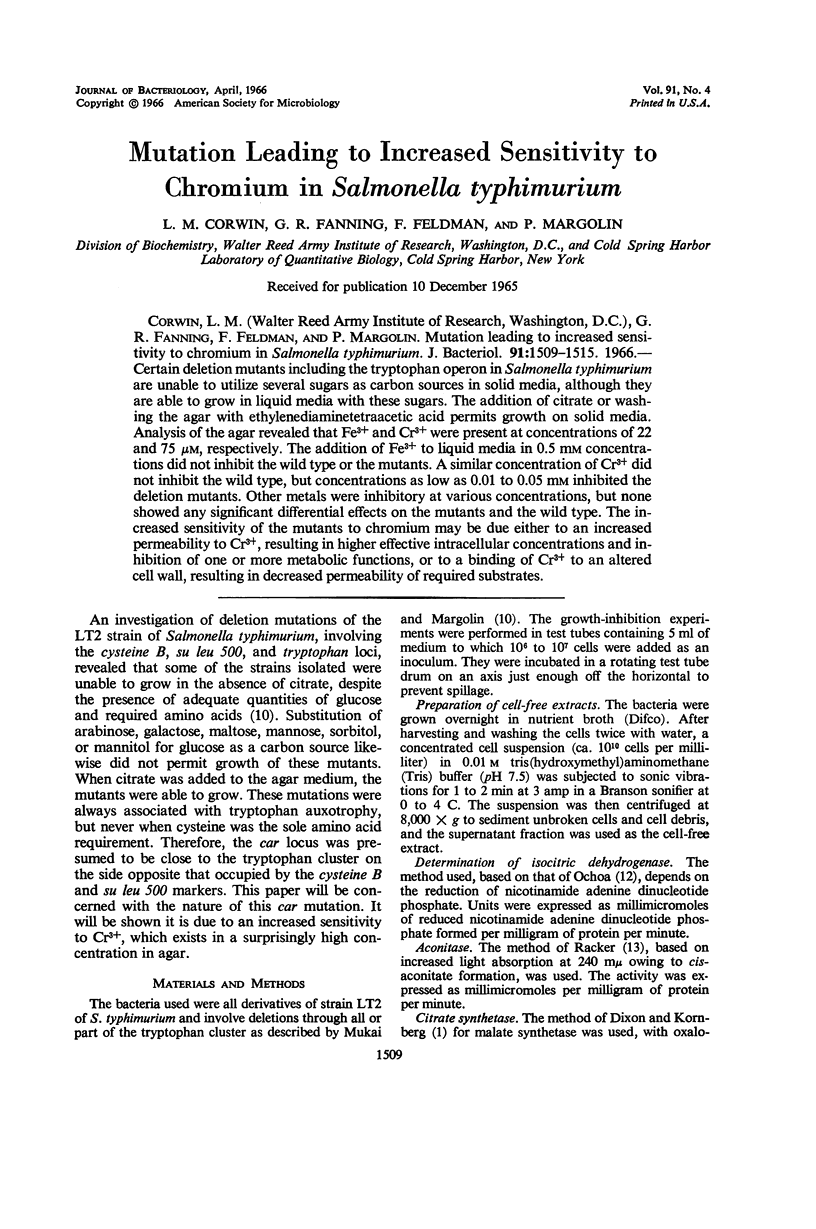
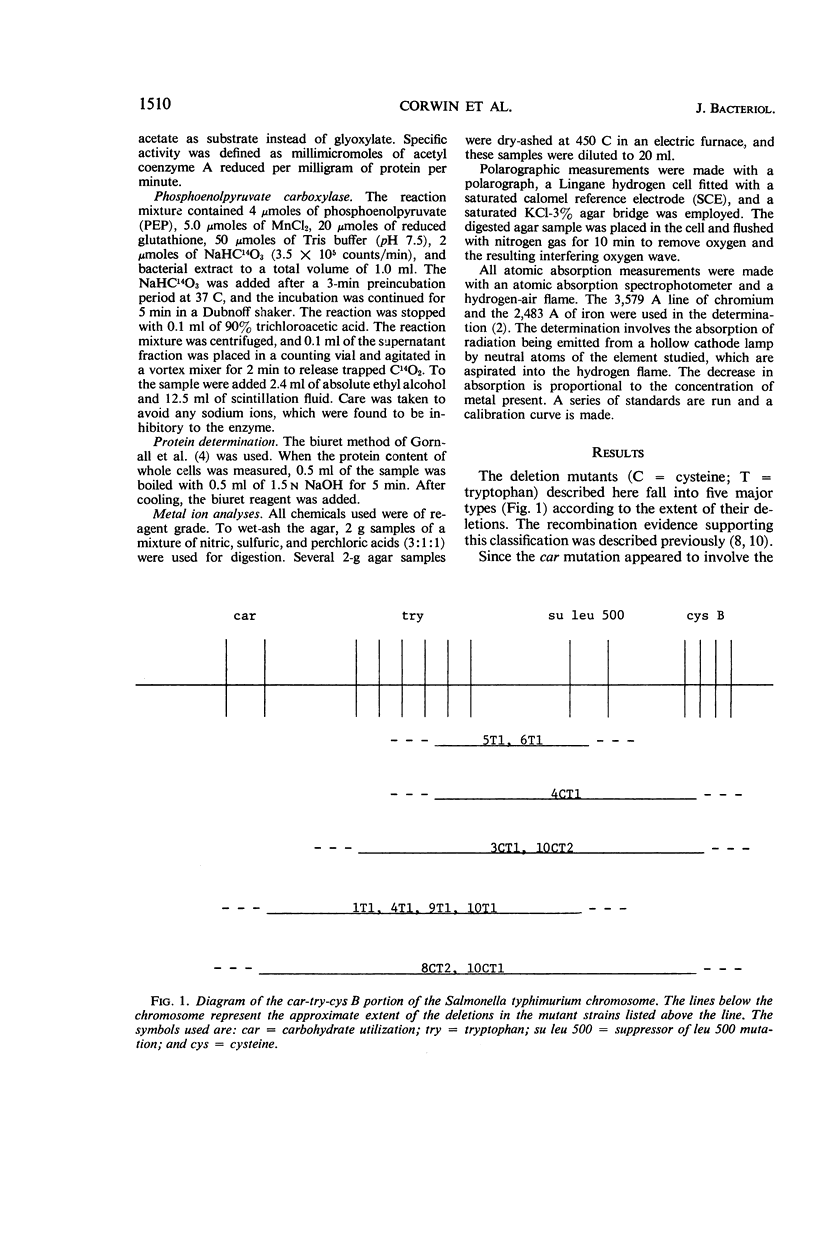
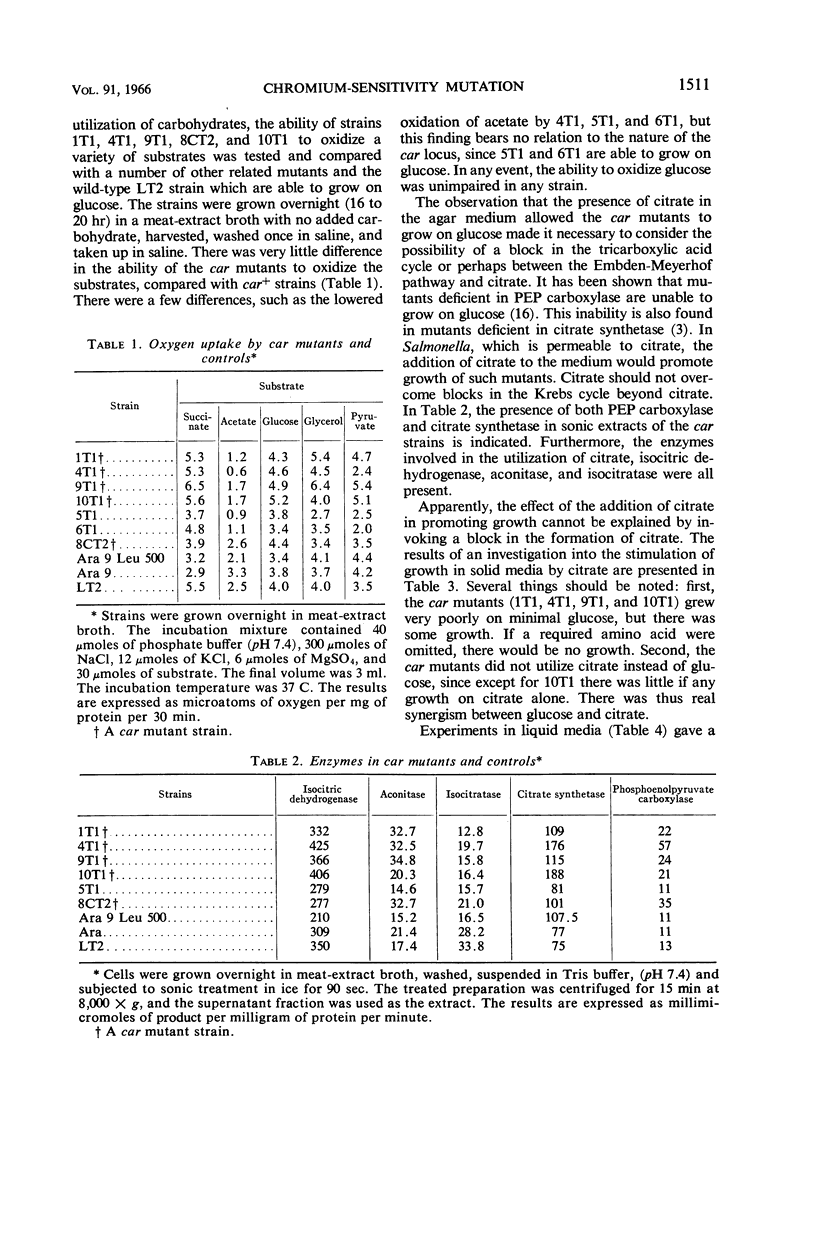
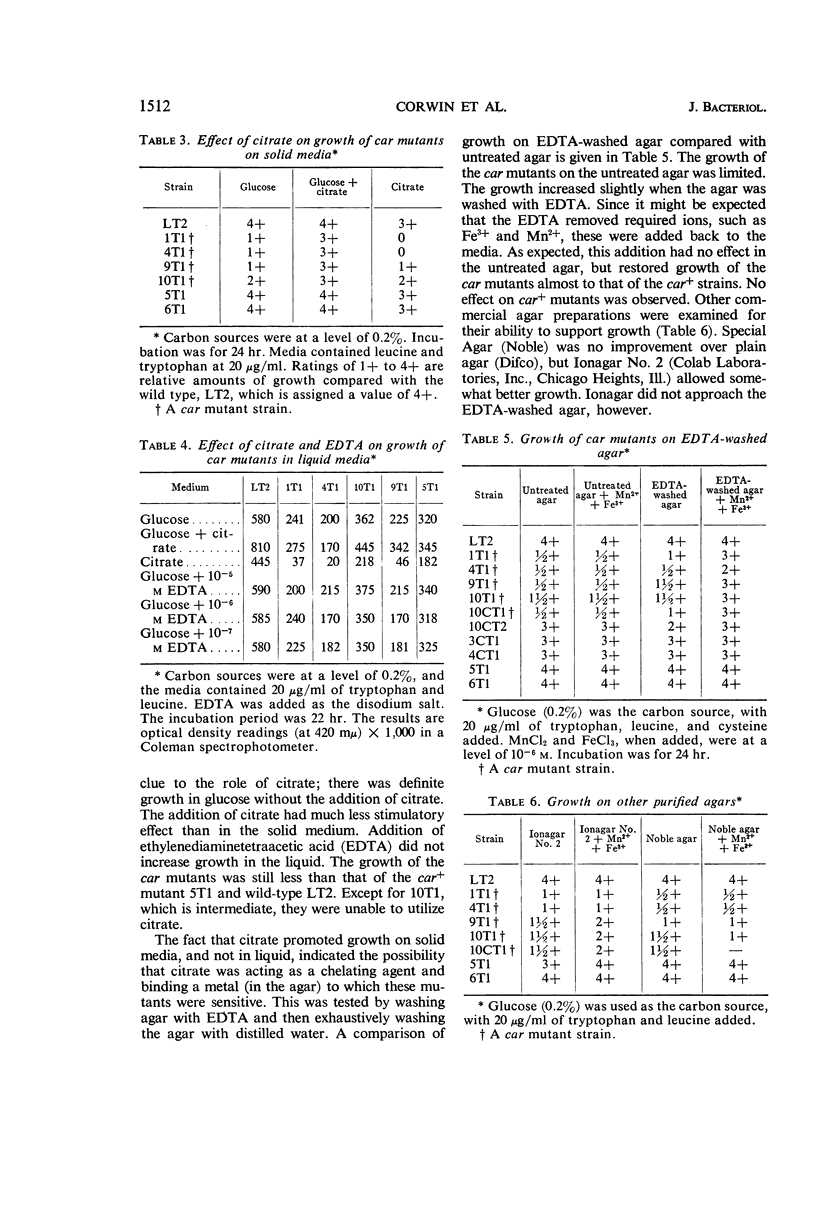
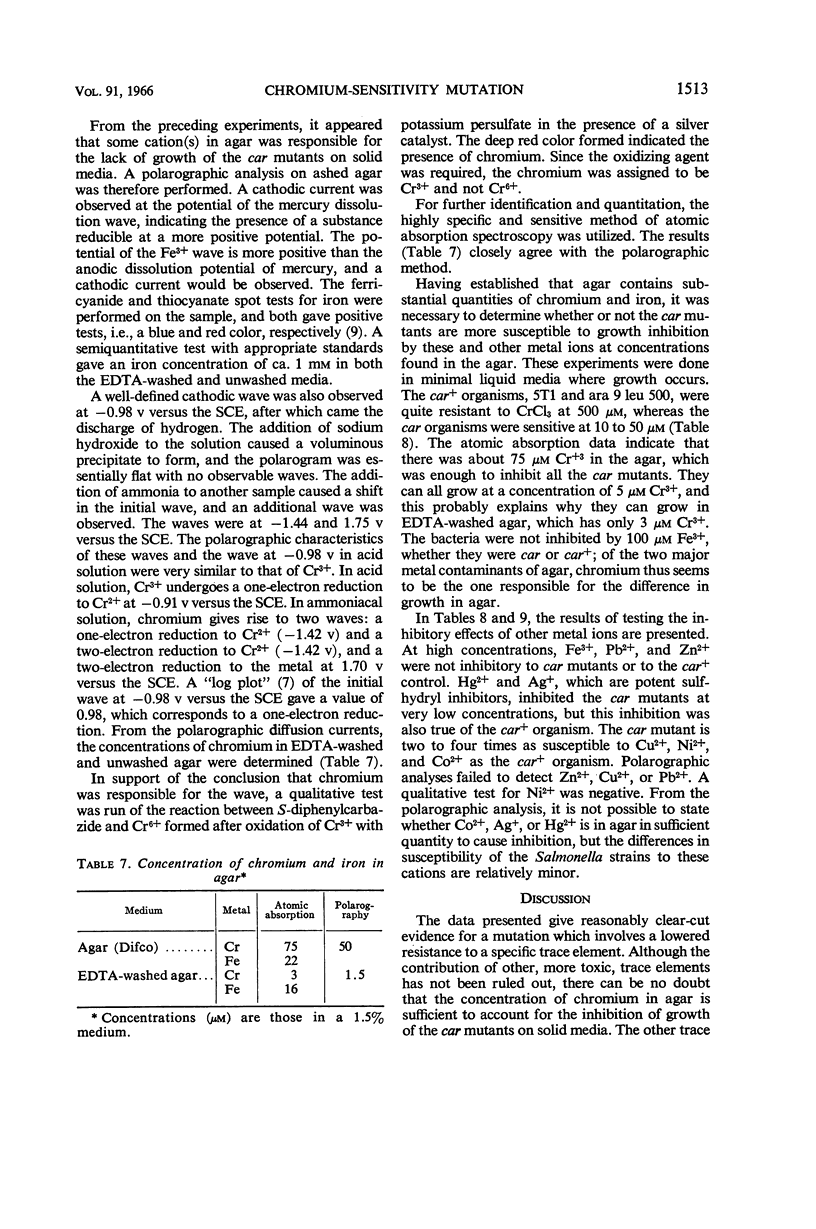
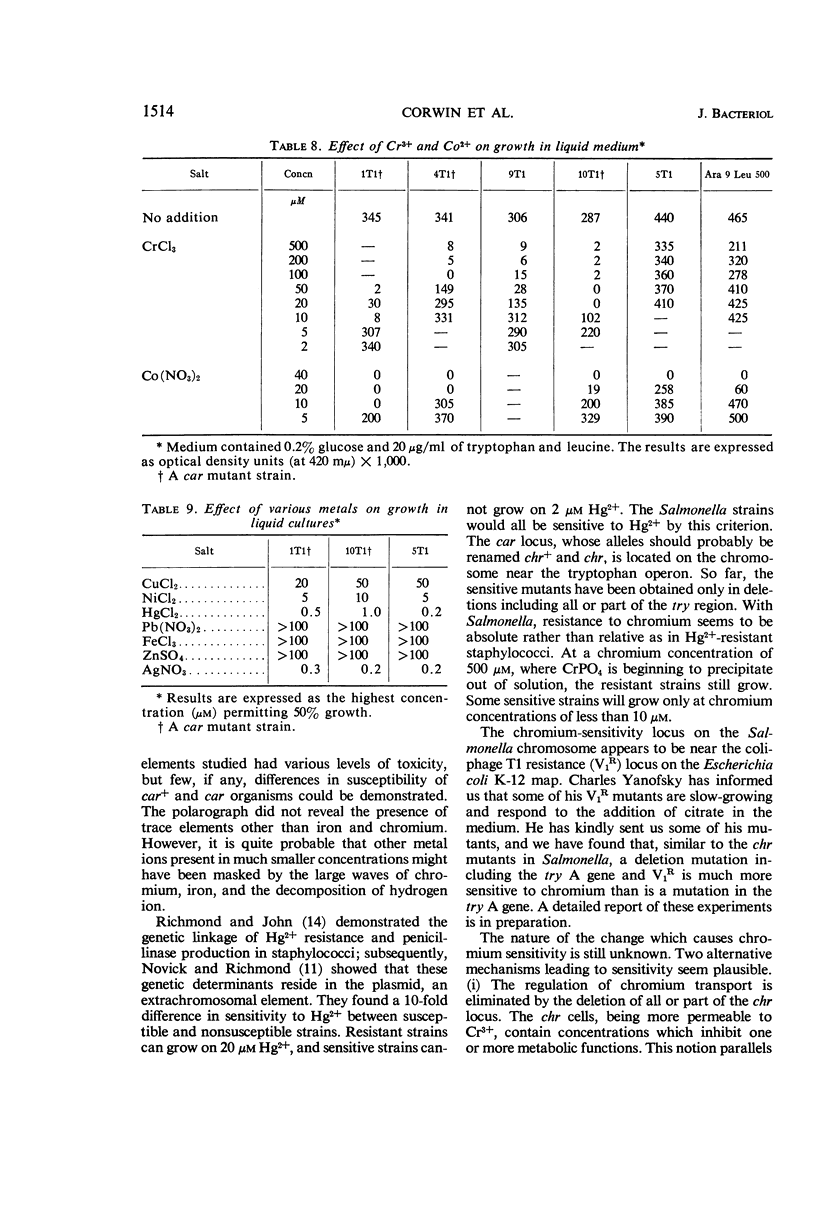
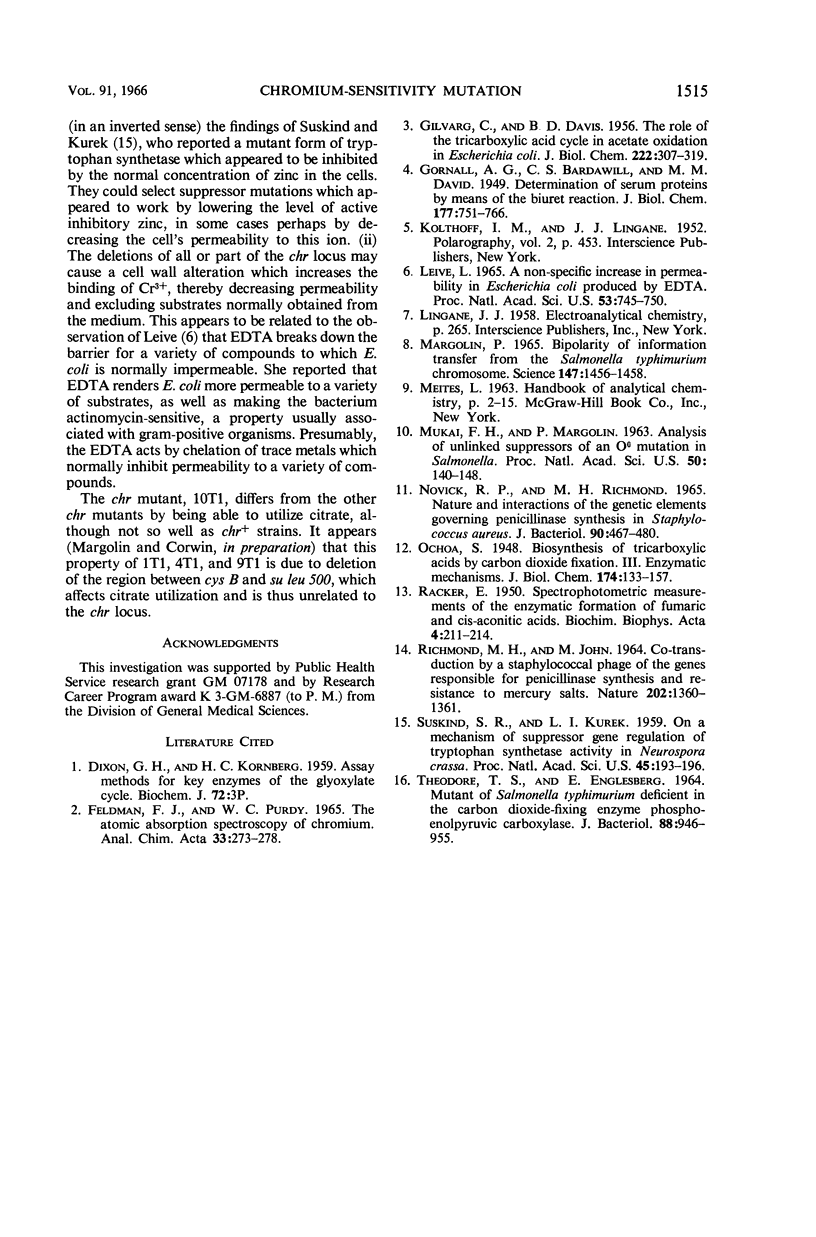
Selected References
These references are in PubMed. This may not be the complete list of references from this article.
- DAVIS B. D., GILVARG C. The role of the tricarboxylic acid cycle in acetate oxidation in Escherichia coli. J Biol Chem. 1956 Sep;222(1):307–319. [PubMed] [Google Scholar]
- LEIVE L. A NONSPECIFIC INCREASE IN PERMEABILITY IN ESCHERICHIA COLI PRODUCED BY EDTA. Proc Natl Acad Sci U S A. 1965 Apr;53:745–750. doi: 10.1073/pnas.53.4.745. [DOI] [PMC free article] [PubMed] [Google Scholar]
- MARGOLIN P. BIPOLARITY OF INFORMATION TRANSFER FROM THE SALMONELLA TYPHIMURIUM CHROMOSOME. Science. 1965 Mar 19;147(3664):1456–1458. doi: 10.1126/science.147.3664.1456. [DOI] [PubMed] [Google Scholar]
- Mukai F. H., Margolin P. ANALYSIS OF UNLINKED SUPPRESSORS OF AN O degrees MUTATION IN SALMONELLA. Proc Natl Acad Sci U S A. 1963 Jul;50(1):140–148. doi: 10.1073/pnas.50.1.140. [DOI] [PMC free article] [PubMed] [Google Scholar]
- NOVICK R. P., RICHMOND M. H. NATURE AND INTERACTIONS OF THE GENETIC ELEMENTS GOVERNING PENICILLINASE SYNTHESIS IN STAPHYLOCOCCUS AUREUS. J Bacteriol. 1965 Aug;90:467–480. doi: 10.1128/jb.90.2.467-480.1965. [DOI] [PMC free article] [PubMed] [Google Scholar]
- RACKER E. Spectrophotometric measurements of the enzymatic formation of fumaric and cis-aconitic acids. Biochim Biophys Acta. 1950 Jan;4(1-3):211–214. doi: 10.1016/0006-3002(50)90026-6. [DOI] [PubMed] [Google Scholar]
- RICHMOND M. H., JOHN M. CO-TRANSDUCTION BY A STAPHYLOCOCCAL PHAGE OF THE GENES RESPONSIBLE FOR PENICILLINASE SYNTHESIS AND RESISTANCE TO MERCURY SALTS. Nature. 1964 Jun 27;202:1360–1361. doi: 10.1038/2021360a0. [DOI] [PubMed] [Google Scholar]
- Suskind S. R., Kurek L. I. ON A MECHANISM OF SUPPRESSOR GENE REGULATION OF TRYPTOPHAN SYNTHETASE ACTIVITY IN NEUROSPORA CRASSA. Proc Natl Acad Sci U S A. 1959 Feb;45(2):193–196. doi: 10.1073/pnas.45.2.193. [DOI] [PMC free article] [PubMed] [Google Scholar]
- THEODORE T. S., ENGLESBERG E. MUTANT OF SALMONELLA TYPHIMURIUM DEFICIENT IN THE CARBON DIOXIDE-FIXING ENZYME PHOSPHOENOLPYRUVIC CARBOXYLASE. J Bacteriol. 1964 Oct;88:946–955. doi: 10.1128/jb.88.4.946-955.1964. [DOI] [PMC free article] [PubMed] [Google Scholar]


